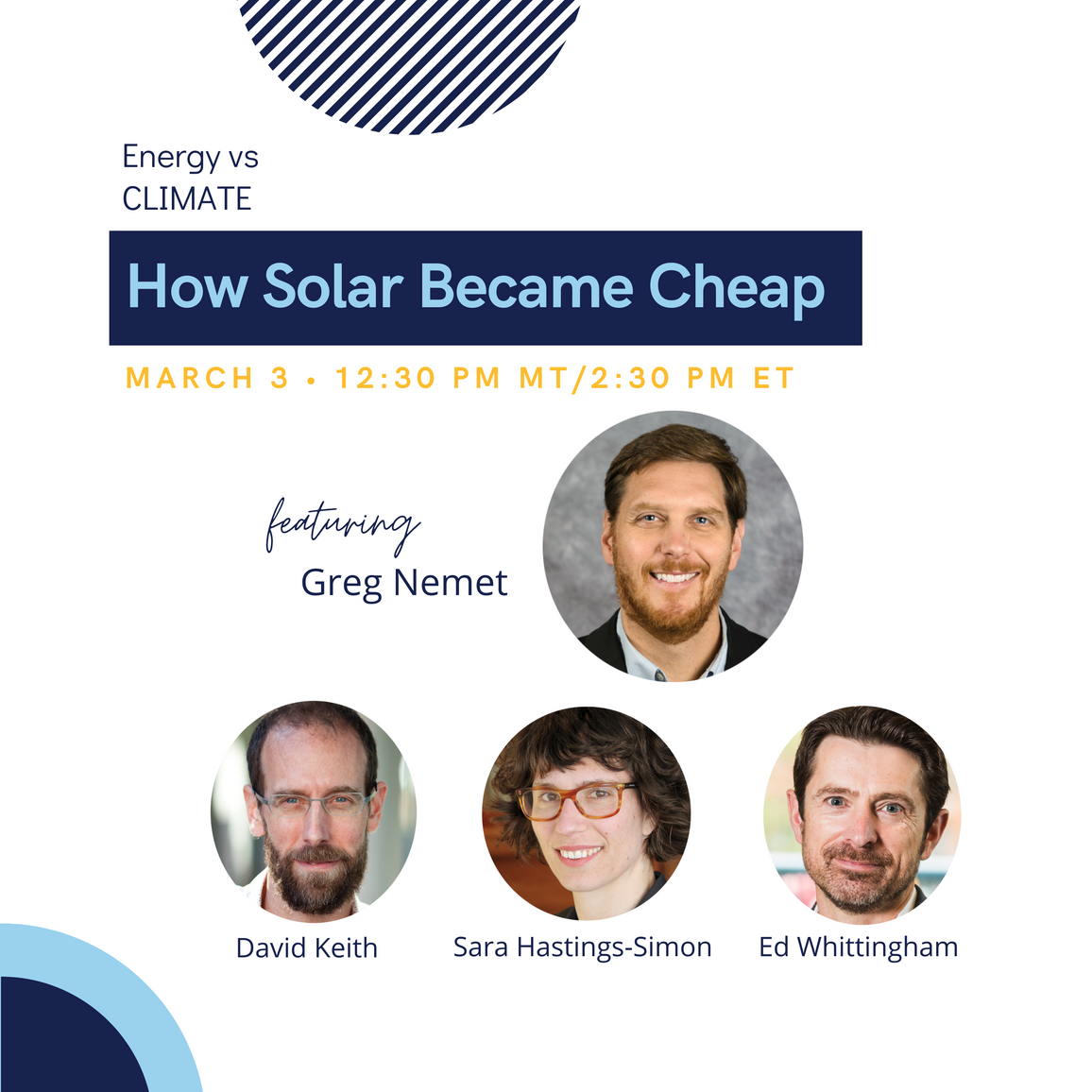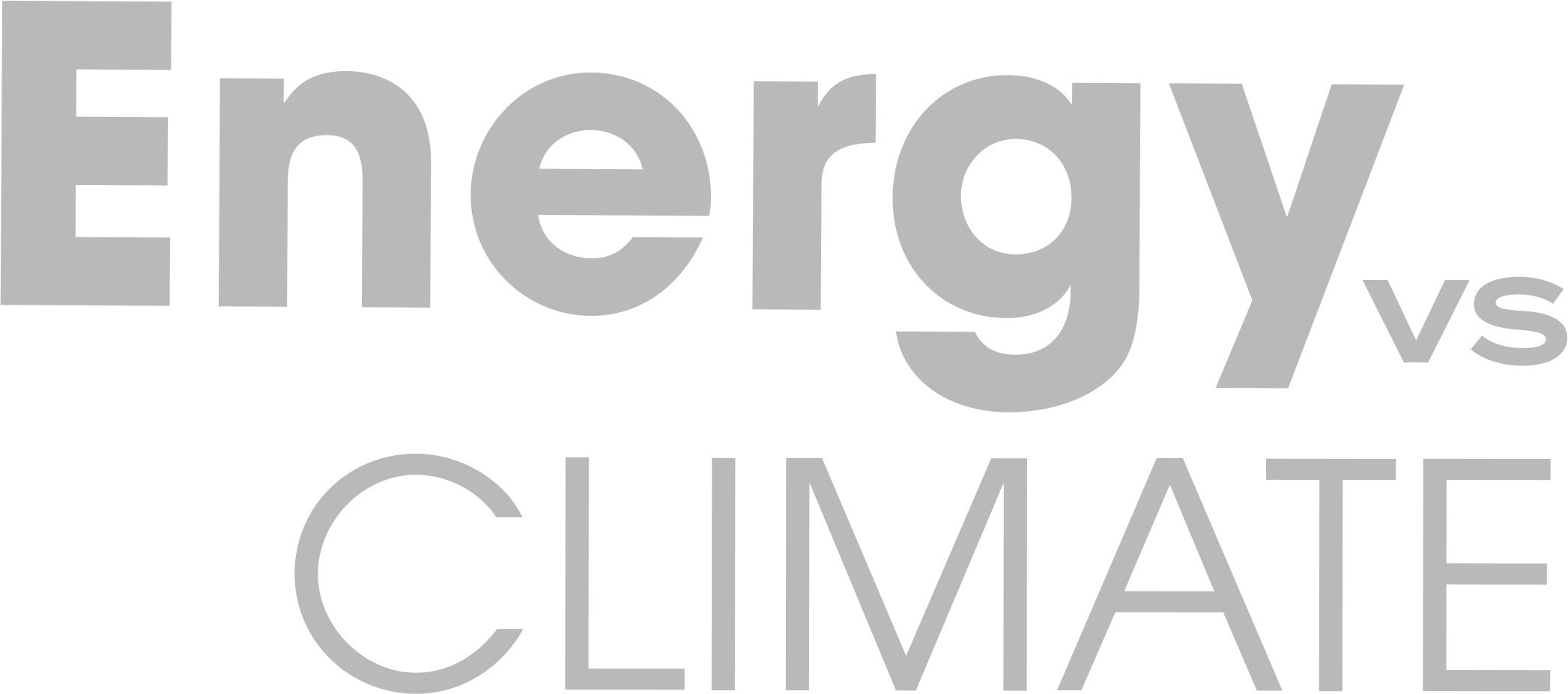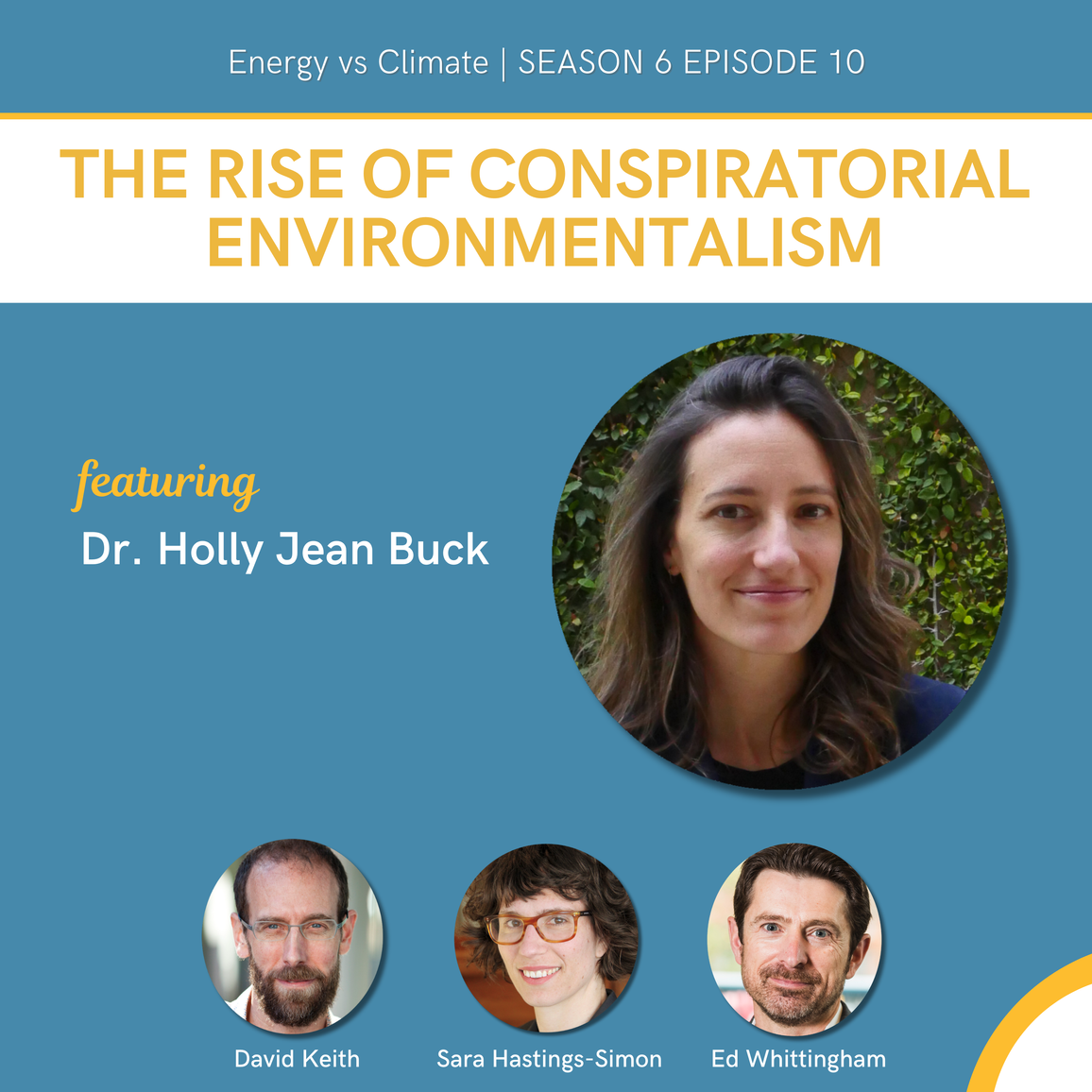How Solar Became Cheap

The cost of solar power has decreased by a factor of 1,000 over the last fifty years, and by a factor of 10,000 since it was first used to power a satellite in the mid-1950s. According to the International Energy Agency, in some sunny regions solar is now the cheapest energy available – cheaper than coal, gas and wind. What have we learned from solar's multi-decade cost curve decline? How did it benefit from a free flow of ideas, equipment and people across national borders? What lessons can we apply to other forms of climatetech, such as energy storage and carbon capture?
David, Sara, Ed, and special guest Greg Nemet break down solar’s trajectory on Episode 29 of Energy vs Climate.
EPISODE NOTES
@0:47 - IPCC 6: Climate Change 2022: Impacts, Adaptation and Vulnerability
@1:00 - Ukraine War and U.S. Politics Complicate Climate Change Fight
@2:15 - How Solar Energy Became Cheap, Twitter: @GregNemet
@5:56 - There should be no new gas supply contracts with Russia: IEA (cnbc.com)
@7:14 - 25. anniversary of the 1973 oil embargo: Energy trends since the first major U.S. energy crisis
@15:15 - Inter-technology knowledge spillovers for energy technologies - ScienceDirect
@20:00 – Expert Assessments of Future Photovoltaic Technologies
@21:00 - The German Feed-in Tariff - futurepolicy.org
@32:03 - Evaluating the causes of cost reduction in photovoltaic modules - ScienceDirect
@34:50 - U.S. Solar Photovoltaic System and Energy Storage Cost Benchmark: Q1 2020 (nrel.gov)
@40:02 - Canadian Solar – Global
@54:34 - Low Carbon Fuel Standard - an overview | ScienceDirect Topics
@55:17 - WTO Body Confirms Ontario’s Local Content Rules for Renewables Are Discriminatory (powermag.com)
About your co-hosts:
Gregory Nemet's research focuses on understanding the process of technological change and the ways in which public policy can affect it. He teaches courses in policy analysis, energy systems, and international environmental policy. Supported by an Andrew Carnegie Fellowship, Nemet published a book in 2019, "How Solar Energy Became Cheap: A Model for Low-Carbon Innovation," about how solar photovoltaics provide a model for low carbon innovation. He was awarded the inaugural World Citizen Prize in Environmental Performance by APPAM in 2019 and is currently a lead author for the Intergovernmental Panel on Climate Change 6th Assessment Report.
David Keith is a professor at Harvard in Engineering and the Kennedy School. He is the founder of Carbon Engineering and was formerly a professor at the University of Calgary. He splits his time between Canmore and Cambridge.
Sara Hastings-Simon studies energy transitions at the intersection of policy, business, and technology. She’s a policy wonk, a physicist turned management consultant, and a professor at the University of Calgary and Director of the Master of Science in Sustainable Energy Development.
Ed Whittingham is a clean energy policy/finance consultant, fellow at the Public Policy Forum and a mentor with the Creative Destruction Lab. He is the former executive director of the Pembina Institute.


